Tag Archives cover crops

Sustainability scoring service gets upgrade

Cover crops pose challenge for Prairie farmers
Practice called difficult, although not impossible, within existing production systems such as herbicide-tolerant canola
Glacier FarmMedia – Cover crops can provide benefits, but incorporating them into other cropping systems, especially when growing herbicide-tolerant crops including canola, can be a challenge. That’s the topic of the latest research by Yvonne Lawley, an associate professor in the University of Manitoba plant science department. She was the key speaker at a July […] Read more
Major U.S. research project conducted in southern Sask.
South East Research Farm conducts cover crop trials for Pepsico and the Foundation for Food and Agriculture Research
REDVERS, Sask. — If research is going to be ground-truthed to make sure it applies to the real world of farming, it needs to be truthed on the kind of ground farmers actually farm. That was probably one of the keys to the South East Research Farm (SERF) landing a major research contract from food […] Read more
Vegetable grower experiments with cover crops
When the Manitoba Organic Alliance couldn’t find producers using the practice, it convinced a grower to give it a try
Glacier FarmMedia – When the Manitoba Organic Alliance first looked for a vegetable farmer who was using cover crops, it struck out. It had to convince Jeff Veenstra of Wild Earth Farms in the Rural Municipality of Springfield to try the idea. “Honestly, I probably would not have done it this year had I not […] Read more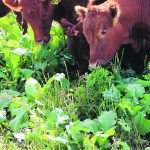
Including cattle on cropland didn’t help soil health
Saskatchewan and Manitoba research finds soil benefits from cover crops, but grazing them doesn’t really move the needle
Glacier FarmMedia – Annual cover crops have another research receipt to support their purported soil health benefits. But while those mixes can help cattle producers graze longer or recover some of the establishment cost by feeding livestock, cattle activity might not magnify soil health gains as much as many would hope. The research comes from […] Read more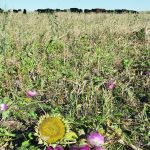
Poly crop grazing has benefits but also pitfalls
Planting a variety of forage crops in the same field can be successful, but it’s important to watch for potential dangers
REGINA — Poly crops have become a popular way to feed cattle, but more research is needed into the nutritional properties of the plants in each blend. Jennifer Hayden, a livestock and feed extension specialist from North Battleford, Sask., said poly crops can provide relief to pastures, especially during drought. They can be grazed, baled […] Read more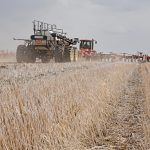
U.S to incentivize climate friendly farming
Farmers offered money to adopt practices that store carbon in the soil, but experts doubt the approach will be effective
WASHINGTON (Reuters) — President Joe Biden’s administration is offering farmers money to adopt practices that store carbon in the soil to fight climate change, but soil science experts and a review of U.S. Department of Agriculture research indicate doubt that the approach will be effective. Planting cover crops and reducing tillage are key to the […] Read more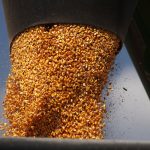
Corn-fuelled flight faces restrictions

Cover crop efficiency may drop
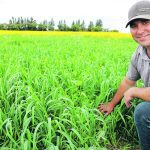
Cover crop blend helps keep forage in rotation
A grain and cattle producer from Saskatchewan calls a mixture of 15 different crop varieties ‘Mother Nature’s blueprint’
GALAHAD, Alta. — Cattle producers across the Prairies are beginning to use a mix of several different seed varieties in a single cover crop for high-quality feed, said an agrologist during a field day. “Farmers are looking at it for better yields and high quality feed,” said Adam Smith, sales manager for Covers and Co. […] Read more


